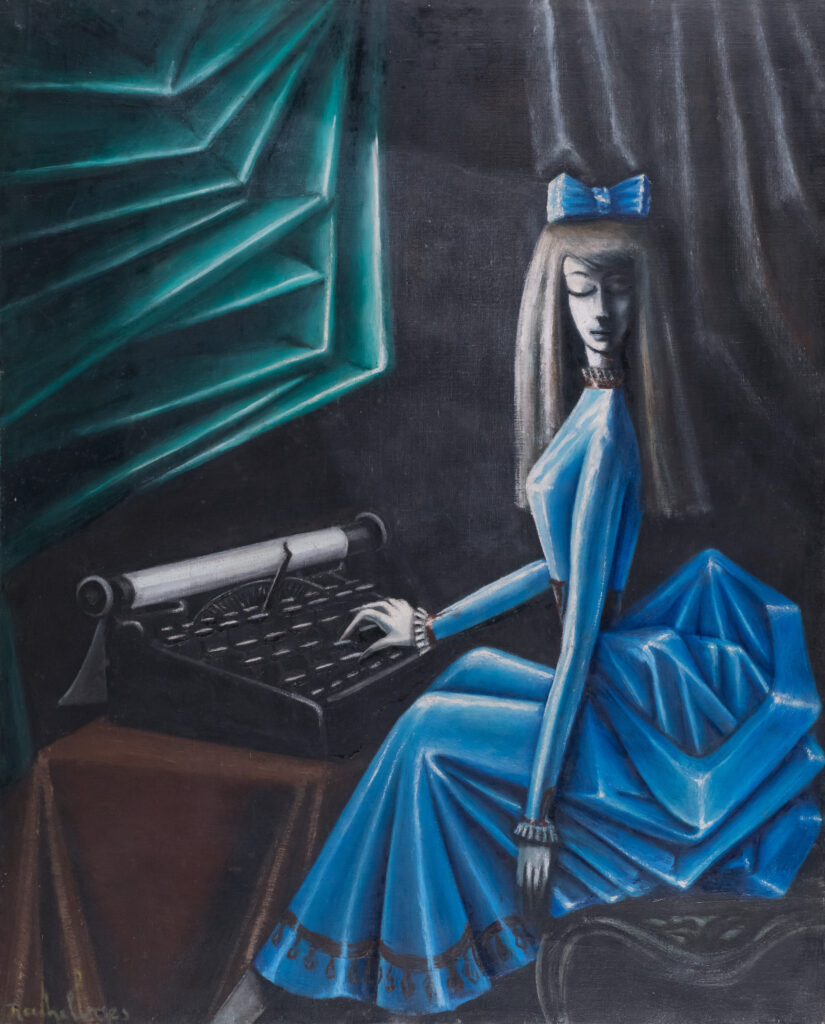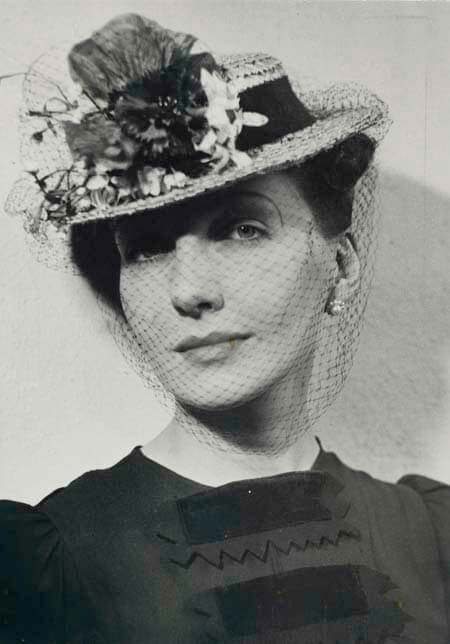“I am not a Surrealist painter, I am a Surrealist that paints” Rachel Baes wrote in her diary. This did not however prevent Baes from frequenting both the Surrealist circle in Brussels and the members of the French group. In 1945 she met Paul Éluard and his wife, Nusch, whose portrait she painted. The following year Éluard published a poem in which he described Baes: “As a lonely woman / Who draws instead of talking / In the desert / And so as to see before her […]”. During this period, Baes associated with numerous artists and writers on the Parisian scene, among them Georges Bataille, Jean Cocteau, Marcel Lecomte, E. L. T. Mesens, and Magritte (she performed the role of muse in some of Magritte’s amateur films.)
Convinced of the merit of her work, Wifredo Lam even introduced her to Breton in 1952. Under his guidance, she exhibited the following year at the “A l’Étoile scellée” gallery in Paris.
In 1940, her lover, Joris van Severen, founder in 1931 of the far-right Verdinaso (a Fascist political movement in Belgium) who, sus-pected of collaboration, was shot by the French military.
Following this tragedy, Rachel Baes abandoned the flower and landscape pictures that had earned her acclaim among her middle-class patrons. She now immersed herself in the dreamlike and sombre world of surrealism, channeling the pain she had endured: “The one and only freedom lies in dreams” she concluded at the time. Baes’ work became predominantly inhabited by female figures, and often young girls. Strange, mysterious little things, dressed like dolls, are depicted in airless rooms with an angst-ridden atmosphere and seem to subvert Breton’s cherished image of the child-woman, whose purity, and candidness he thought would facilitate access to the subconscious. Her girls do not possess the erotic qualities these artists invested in. Juggling with ambiguity, as if heralding the terrible events of the artist’s own life, these little girls appear prey to invisible demonic forces and are condemned to a tragic fate.
“L’aube testamentaire” (the testamentary dawn) symbolizes the beginning of a significant period in Baes’ life – In 1962, she retired from public life and settled alone in Bruges, focusing exclusively on painting local subjects. This work is likely to be a self-portrait in which the artist conjures up an image of herself in her youth. Set against a dark, somber backdrop, the prominence of blue hues evokes tranquil melancholy and sadness – nonetheless, the model’s facial expressions remain serene, accentuated by her proud posture, suggesting a sense of accomplishment and dignity.
The presence of a typewriter – a recurring motif in the Surrealist movement – resonates with Man Ray’s iconic 1924 photograph, “Waking Dream Séance” which shows André Breton’s wife Simone Kahn seated at a typewriter, surrounded by a large group of glaring male surrealists taking part in a waking dream seance session. In both Baes’ and Man Ray’s works, the model’s hands at the typewriter serve as conduits for automatic text . However, the similarities between Baes’ and Man Ray’s pieces diverge in their portrayal of “the gaze”. While Man Ray’s work depicts Simone as central to the autographic process, she nevertheless appears as a non-autonomous extension of the machine – almost a female recording instrument. Baes, on the other hand, presents her woman as fully self-governing; holding the viewer’s gaze, she is central to the picture’s narrative.
Given the painting’s date – 1962 – it is feasible to imagine that the girl (Baes) is typing out the announcement of her retirement from public life.
Rachel Baes produced an earlier painting of the same subject in 1958, titled “Une lettre du verbe aimer”.

